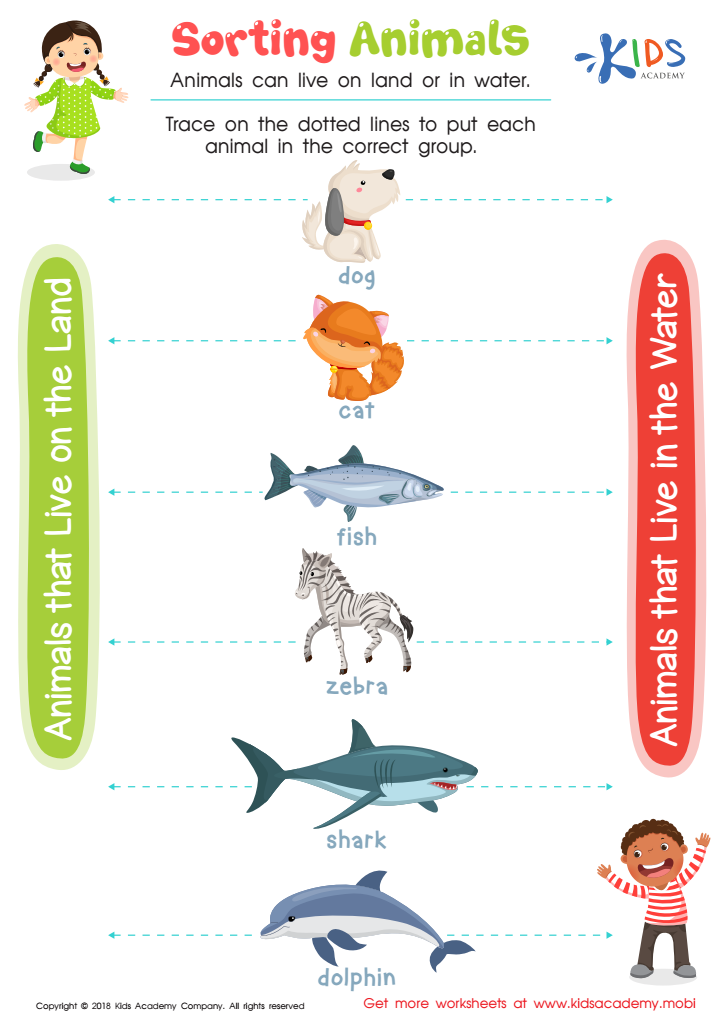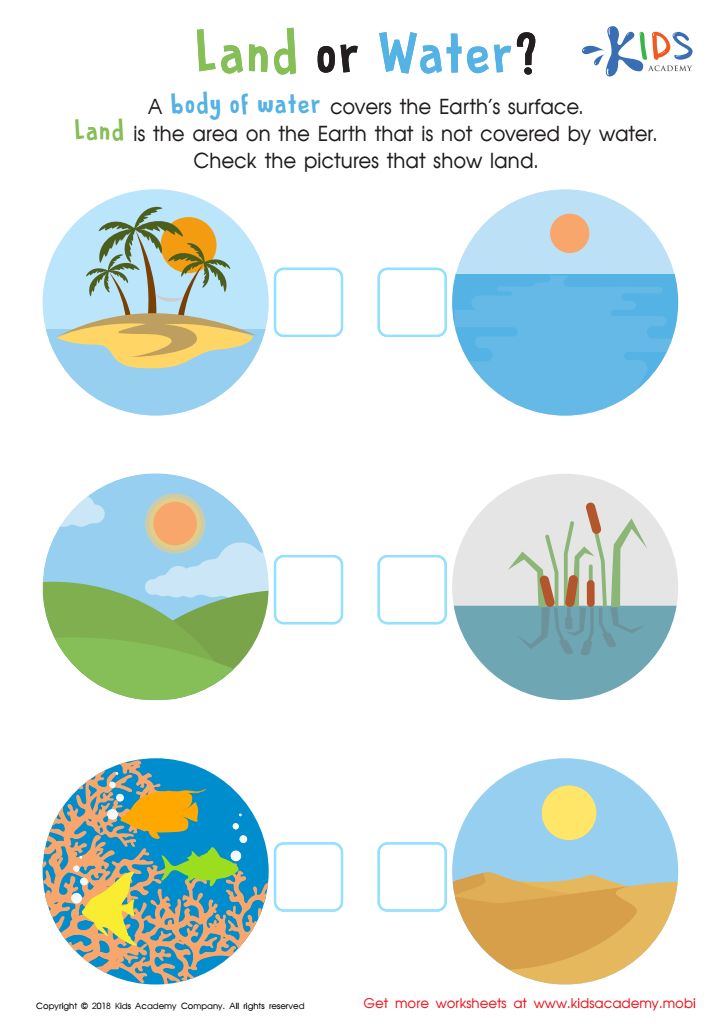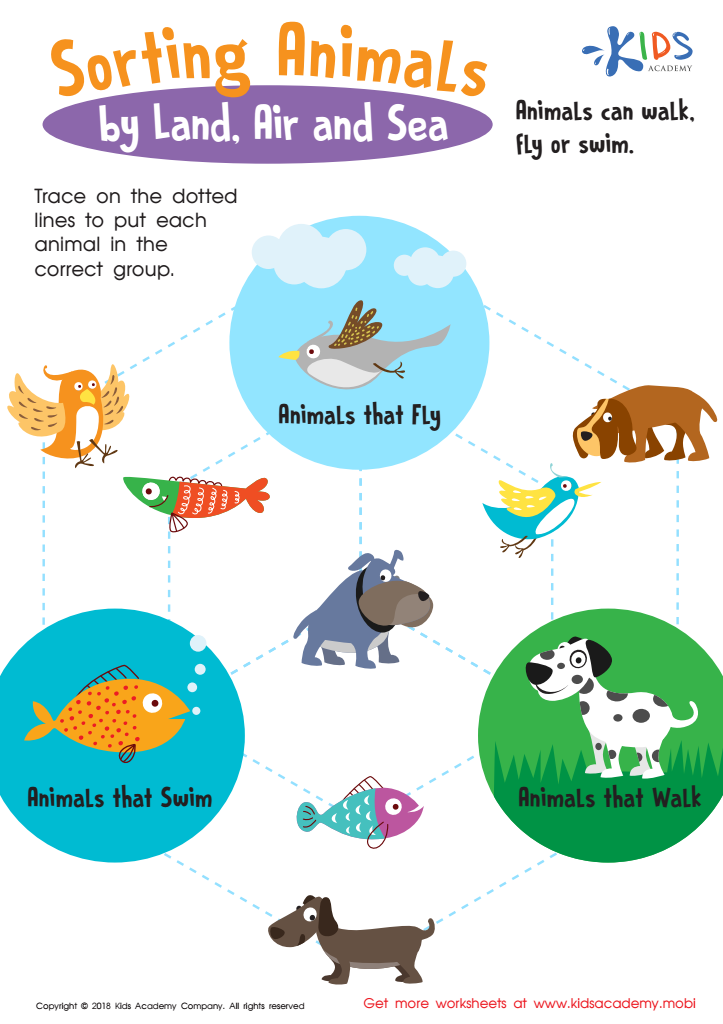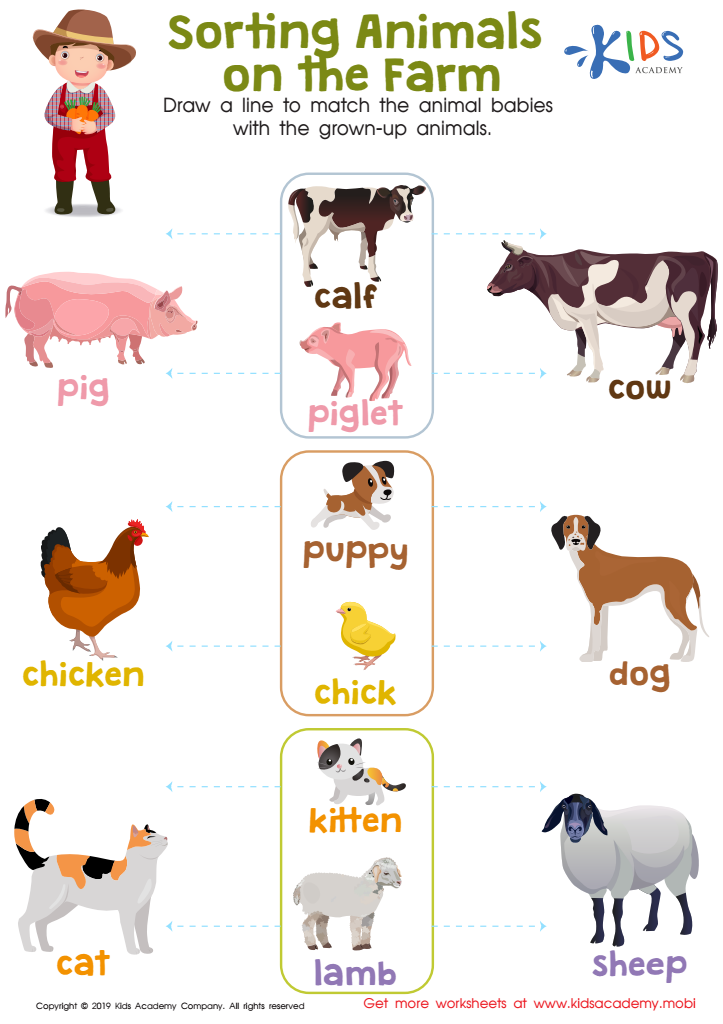Understanding habitats Normal Worksheets for 5-Year-Olds
4 filtered results
-
From - To
Discover the fascinating world of habitats with our engaging worksheets designed specifically for 5-year-olds! Our “Understanding Habitats Normal Worksheets” encourage young learners to explore different environments where animals and plants thrive. Through vibrant illustrations and easy-to-follow activities, children will identify various habitats, including forests, oceans, and deserts. These worksheets promote critical thinking and help develop essential skills such as observation, classification, and comprehension. Facilitating a hands-on learning experience, these resources are perfect for both classroom and home use. Give your little ones the tools they need to understand and appreciate the incredible diversity of our planet’s ecosystems in a fun, interactive way!


Sorting Animals Worksheet


Land or Water Worksheet


Sorting Animals by Land, Air and Sea Worksheet


Sorting Animals on the Farm Worksheet
Understanding habitats is crucial for 5-year-olds as it lays the foundation for their appreciation of nature and the environment. At this age, children are naturally curious, and teaching them about different habitats—like forests, oceans, and deserts—helps them connect with the world around them. When parents and teachers engage children in discussions about where animals live and the plants that thrive in various ecosystems, they cultivate a sense of wonder and responsibility toward the environment.
Learning about habitats also promotes critical thinking and observation skills. Children can explore their surroundings, ask questions, and think about how living things interact within their environments. This experiential learning fosters creativity and encourages problem-solving skills as they consider the needs of plants and animals.
Moreover, understanding habitats can instill values such as empathy and respect for living creatures. As children recognize the diversity of life and the importance of ecosystems, they are more likely to develop a caring attitude towards nature. Ultimately, teaching 5-year-olds about habitats nurtures responsible future stewards of the Earth, empowering them to make informed decisions that positively impact the environment as they grow.
 Assign to My Students
Assign to My Students






















